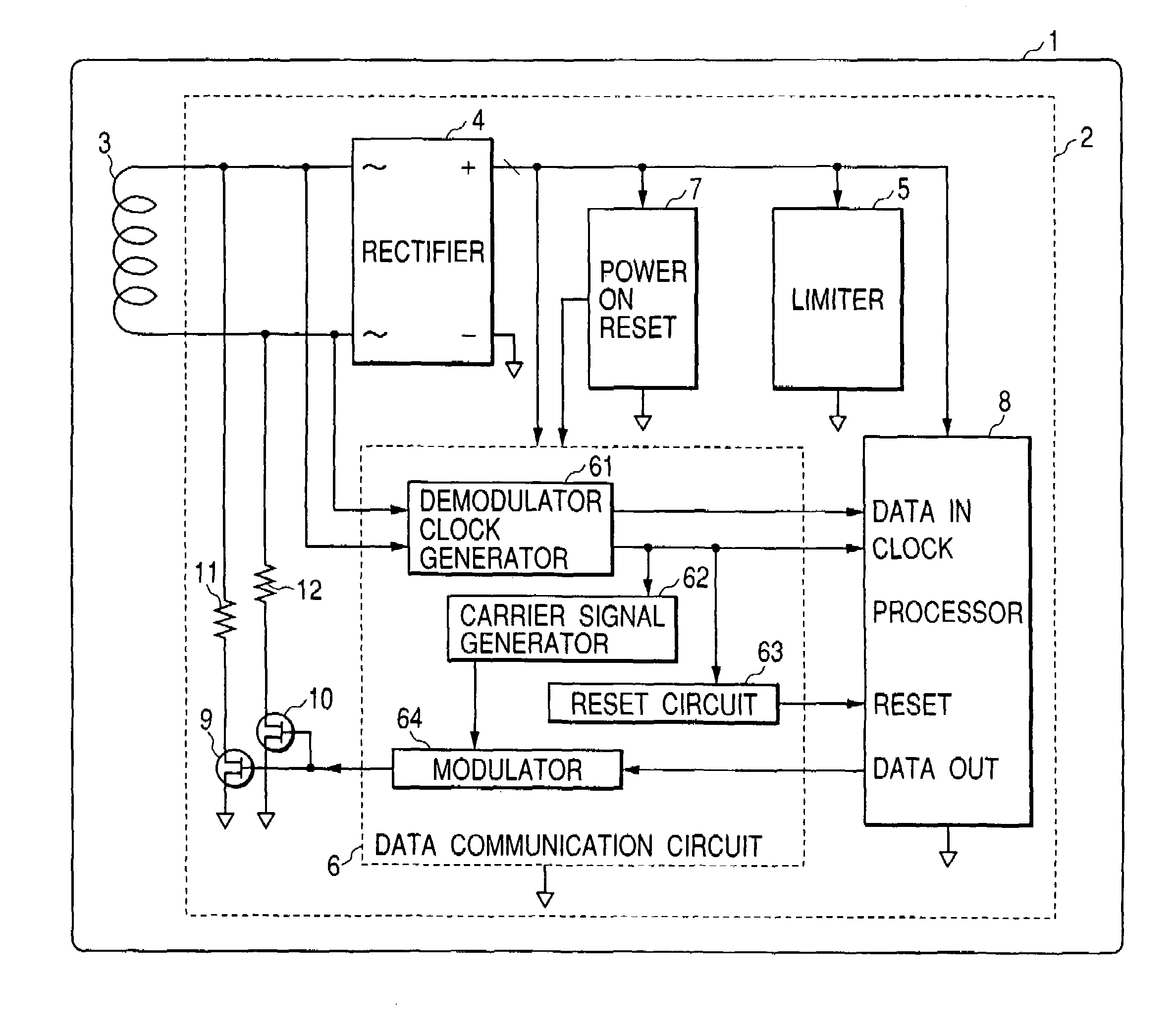RFID (radio frequency identification) and IC card
a technology of radio frequency identification and ic card, which is applied in the field of radio frequency identification and ic cards, can solve the problems of increasing cost, requiring a higher startup receiving power level than an operational receiving power level, and dummy load redesigned, so as to reduce the working voltage margin of the ic, the effect of large variation width of the power supply voltage of the i
- Summary
- Abstract
- Description
- Claims
- Application Information
AI Technical Summary
Benefits of technology
Problems solved by technology
Method used
Image
Examples
embodiment 1
[0022]A configuration and circuit operations of a contactless IC card as a form of RFID will first be described below.
[0023]FIG. 1 presents a general configuration of the contactless IC card. In this figure, there is shown a plan view of a part mounting arrangement on a card base material with a surface layer removed. An IC chip 2 is connected with an antenna coil 3 on an IC card 1.
[0024]FIG. 2 presents a general configuration of circuit blocks of the contactless IC card. The circuit block configuration shown in this figure is applicable to implementation of the present invention. Note, however, that an internal structure of a power-on-reset circuit 7 in the present invention is different from those in conventional techniques.
[0025]Referring to FIG. 2, power is received from an external apparatus through the antenna coil 3 contained in the IC card 1. For information interchange with the external apparatus, contactless coupling operations are performed as described below.
[0026]An AC ...
embodiment 2
[0046]Referring to FIG. 9, there is shown a partial circuit structure in an IC according to another preferred embodiment of the present invention.
[0047]In FIG. 9, the FETs 9 and 10 and the resistors 11 and 12 perform operations as described in the foregoing (explained in description in connection with FIGS. 3 and 7). An OR circuit 64d is provided between an output terminal of the modulator 64 in the data communication circuit 6 of the IC 2 as a switch operation signal source and the gate terminals of the FETs 9 and 10. As another input to the OR circuit 64d, a power-on-reset signal is applied from the power-on-reset circuit 7. There is provided a circuit arrangement in which an output of the OR circuit 64d has a high level when the power-on-reset signal is high regardless of an output level of the modulator 64. Thus, at the time of resetting, the resistors 11 and 12 are grounded to decrease impedance in the IC 2. That is to say, it is not required to provide a hysteresis characteris...
PUM
 Login to View More
Login to View More Abstract
Description
Claims
Application Information
 Login to View More
Login to View More - R&D
- Intellectual Property
- Life Sciences
- Materials
- Tech Scout
- Unparalleled Data Quality
- Higher Quality Content
- 60% Fewer Hallucinations
Browse by: Latest US Patents, China's latest patents, Technical Efficacy Thesaurus, Application Domain, Technology Topic, Popular Technical Reports.
© 2025 PatSnap. All rights reserved.Legal|Privacy policy|Modern Slavery Act Transparency Statement|Sitemap|About US| Contact US: help@patsnap.com



